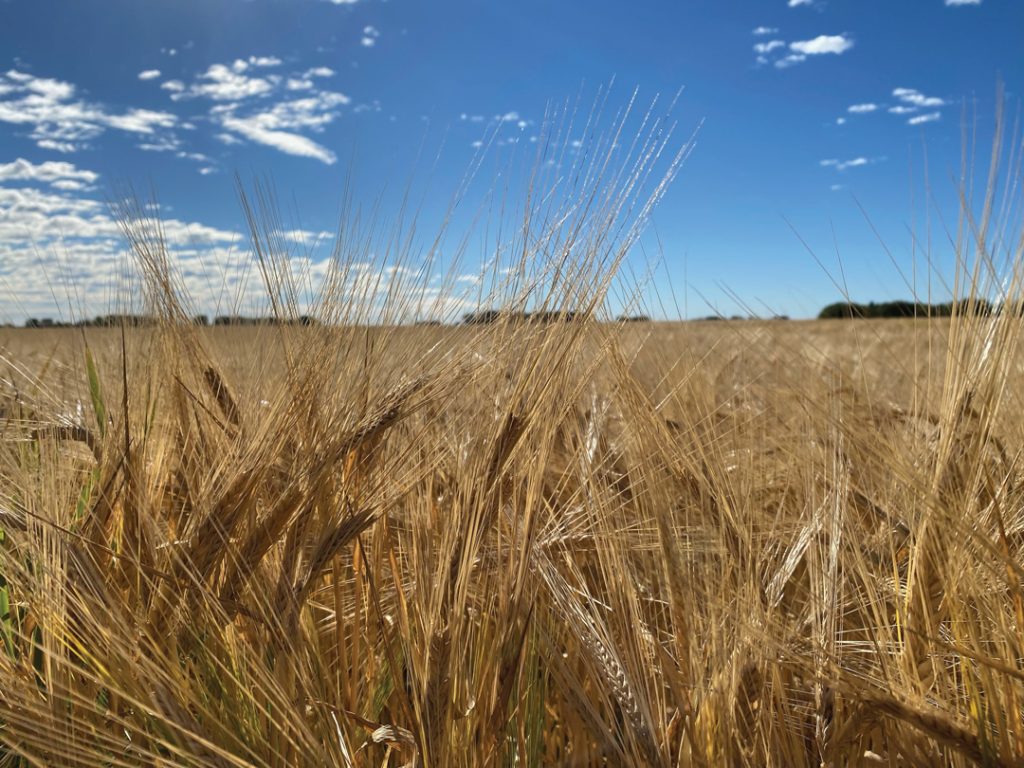EXPORT UNCERTAINTIES
Canada rarely gets the respect it deserves as a steady and dependable crop exporter. Despite this solid record, in the 2024/25 marketing year, export prospects for raw unprocessed canola, wheat and durum are mixed.

Canada rarely gets the respect it deserves as a steady and dependable crop exporter. Despite this solid record, in the 2024/25 marketing year, export prospects for raw unprocessed canola, wheat and durum are mixed.

Mark Walker’s maternal grandparents farmed in Manitoba’s Interlake Region and his father grew up on a livestock farm just outside Victoria, B.C. These deep family farming connections led him to pursue an academic path to a career in agriculture.

In February, the federal government created the new Canada Indo-Pacific Agriculture and Agri-Food office (IPAAO) in Manila, the capital city of the Philippines. The facility is intended to expand trade opportunities in the region. “The creation of the IPAAO is unprecedented for Canada’s agriculture sector,” said an Agriculture and Agri-Food Canada (AAFC) spokesperson. “It is the first time the sector will have a regional office dedicated to the Indo-Pacific region as a whole under Canada’s Indo-Pacific Strategy.”

Nieuwenhuis describes the by-product feeds market as opaque. FeedXchange gives farmers, the ability to see what others are paying and to view historical price trends that can significantly influence purchase decisions and allows them to manage expenses.

Following the release of its 2023 New Wheat Crop report in November of last year, Cereals Canada led four international New Wheat Crop Trade and Technical Missions to showcase the quality of Canadian wheat to customers and buyers. Mission team members included representatives of the Canadian Grain Commission (CGC), exporters and farmers from four provincial wheat organizations.

China is a top destination for Canadian barley, canola and wheat. Canada has typically had the largest market share for canola and been competitive in malting barley. Both of these crops have experienced the rollercoaster of Chinese trade policy. While market access for canola was restricted during the Huawei crisis, Canadian barley benefitted from China’s diplomatic spat with Australia. Generally unaffected by politics, Canada is China’s main source of high-quality wheat, primarily CWRS.

The global beer industry has faced significant headwinds the past few years. The pandemic, followed by the escalation of input costs, supply chain difficulties and shifts in consumer preference hit hard, but not all is doom and gloom. China’s brewing industry is quite profitable and markets such as Brazil, Colombia and Mexico continue to thrive and grow. In 2022, global beer production rose in 2022 to 1.89 million hectolitres (mln hL) from 1.87 in 2021, an increase of 1.33 per cent, or a little more than the beer output of Canada.

Today, AI and its corollary of machine learning have recently become buzzwords everywhere, including agriculture. The implementation of both requires data. It is readily available but, in the area of harvest data, sorely lacks veracity.

The market, defined here as the elements that converge to establish the price for any given commodity or service, has always been hard to discern. Its inscrutable nature promotes the dream of building a “black box” technology that removes human fallibility and emotion from the equation.

In recent years, the Canadian Malting Barley Technical Centre (CMBTC) has worked with major malting and brewing customers in China to facilitate commercial malting and brewing trials. This is the final stage in the roughly three-step process to secure new variety acceptance by end-users.